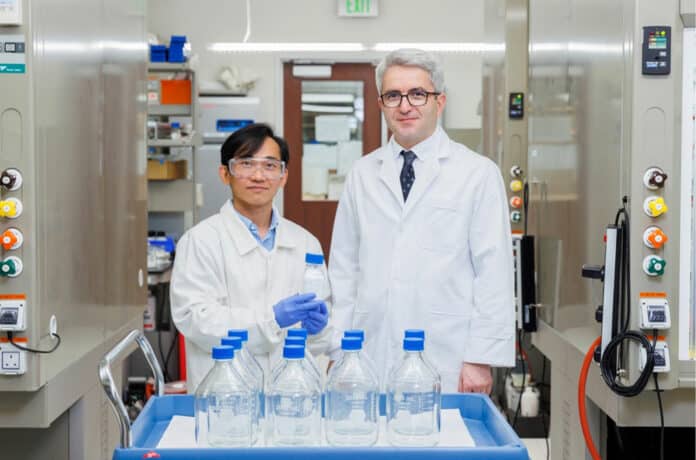To prevent the worst impact of climate change, it has become imperative to develop state-of-the-art solutions for the long-term removal of carbon dioxide from the Earth’s atmosphere in addition to reducing emissions.
In an effort to address this urgent global warming crisis, an international team of researchers led by King Abdullah University of Science and Technology (KAUST) has developed a promising method for carbon capture and storage.
Methane hydrate has been studied for its ability to capture and trap gas molecules such as carbon dioxide under high pressure. However, it is difficult to recreate these conditions in the lab, and the approach is additionally energy-intensive, as the methane-ice solid requires refrigeration.
Using a salt – guanidinium sulfate – researchers have successfully created lattice-like structures called clathrates that effectively mimic the methane hydrate activity, trapping the CO2 molecules and resulting in an energy-efficient way to contain the greenhouse gas.
“The guanidinium sulfate serves to organize and trap the CO2 molecules without reacting with them,” said one of the lead researchers Cafer Yavuz. “We have discovered a rare example of a clathrate that is stable and non-corrosive at ambient temperature and pressure, a highly desirable feature compared with ethanol amine, ammonia, and other solutions that are commonly used in carbon capture.”
The salt-based, clathrate structure utilizes low-energy physisorption processes while capturing CO2 without water or nitrogen interference, opening a promising venue for future carbon capture and storage technologies through rapid CO2 solidification.
This discovery proposes a new way to store and transport carbon dioxide as a solid. CO2 is conventionally carried as a solid in dry ice, compressed in a gas cylinder, or in the form of carbonates. The salt clathrates allow the transport of CO2 in solid powder form, providing a very volumetric capacity per unit weight, making the process the least energy intensive, with tremendous potential for real-life applications.
“Our team made it possible to carry CO2 in a solid form without the need for refrigeration or pressure. You will be able to literally shovel CO2-loaded solids from now on,” Yavuz said. “The impact is wide and strong, as the global fuel industry and the Kingdom entities are actively looking for ways to capture, store and transport CO2 without significant energy penalties.”
This breakthrough could have a significant impact on the fight against climate change, enabling energy-efficient carbon capture and storage. The research team is optimistic that their findings will lead to further improvements in CO2 capture in terms of stability, recyclability, sorption capacity, and selectivity and lower the regeneration energy penalty and cost.
In addition to KAUST, the research team involves scientists from the University of Science and Technology of China (USTC) and the Southern University of Science and Technology (SUSTech).
Journal reference:
- Zhiling Xiang, Congyan Liu, Chunhui Chen, Xin Xiao, Thien S. Nguyen, Cafer T. Yavuz, Qiang Xu, and Bo Liu. Synthesis of stable single-crystalline carbon dioxide clathrate powder by pressure swing crystallization. Cell Reports Physical Science, 2023; DOI: 10.1016/j.xcrp.2023.101383
